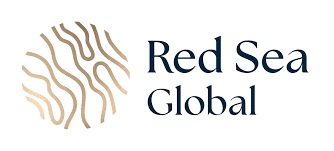When will the Chinese travel market return?

Helena Beard asks the big question. When will the Chinese travel market return?
For those of us working in the Chinese travel industry, Covid has been a very, very long haul. The virus first surfaced in Wuhan at the end of 2019 and, by 25 January 2020, the whole of Hubai province was locked down . Two days later , the Ministry of Culture and Tourism told travel agents to stop the sale of outbound group and package tours, effectively putting the brakes on the holiday industry. International travel to and from China ground to a halt as Covid was declared a global pandemic by mid March.
What happened to the Chinese travel industry?
As outbound tour operators closed their doors, domestic tourism thrived, as the travel-hungry Chinese middle classes took to exploring their own country, discovering that the diversity of China itself can satisfy the need for all sorts of holiday experiences from hiking, to winter sports, to surfing and camping. During Golden Week 2020, it was reported that more than 600 million Chinese travelled domestically, flocking to popular tourist sites such as the Great Wall, Xi’an and the Forbidden City.
However, subsequent city lockdowns which closed major conurbations such as Shanghai and Beijing had a huge impact on travel numbers. Chinese New Year 2022 trips were down 26% on pre-pandemic levels, with a drop in spend of 44%. In August 2022, the darling of the domestic tourism wave, the beach and duty free mecca of Sanya on Hainan Island, was locked down following an outbreak of Omicron, leaving 80,000 tourists stranded. The more infectious Omicron variants are making the idea of Zero Covid seem something of a pipe dream.
Positive signs for travel
Recently, there have been some signs that the international travel market should open up in the coming months. Whilst testing remains a requirement for re-entry to China, the processes have been simplified. International flights between China and the UK have now restarted, with weekly services on Hainan Airlines to Manchester and on China Southern and Air China to Heathrow.
National tourist boards are restarting their Chinese social media campaigns and spending heavily to remind the most valuable market in the world that their destinations are open and welcoming to Chinese tourists. Some, like Germany, didn’t ever pause their campaigns despite the closed borders, such is the power and potential of the Chinese travel market. The future is certain. The timing not so.
Why are China’s borders still closed?
Since 2020, and in support of President Xi’s commitment to the Zero Covid policy, there has been a series of different, and complicated, travel restrictions imposed by China. When most of Europe was opening up to vaccinated travellers in 2021, anyone entering China was still subject to 14 days’ quarantine in an isolation facility (at their own expense) followed by seven days’ quarantine and testing at home. This requirement was loosened in June 2022, shortening the quarantine time to a 7 + 3 pattern, but still requiring six tests before release.
Flights were also severely curtailed under China’s policy for limiting international carriers to one route, once per week with the threat of suspension of the service if any passengers tested positive for Covid on arrival. As a result, capacity was very limited and flights extremely expensive. The only type of travel considered acceptable (and that only more recently) has been for the purposes of study or business, and international students have taken advantage of dedicated charter flights via Hong Kong to return to their universities in Europe.
Zero Covid Policy
China’s Zero Covid policy delivered relative success in the early days. Whilst other nations were locked in their homes throughout 2020, in China, life returned to relative normality, with factories and workplaces remaining open and, as a consequence, manufacturing industry thriving and taking share from other countries such as India, struggling to curtail infection rates and keep production going. China’s GDP continued to grow, up 8.11% in 2021.
Very few deaths were reported from Covid. Official figures report that fewer than 6000 people have died due to Covid since the start of the pandemic and fewer than 1 million cases were reported. Whether you believe these figures, conversations with Guanxi’s Chinese colleagues backs up the low infection rates. Whilst in the UK we all know people who have had Covid, often more than once, nobody in our Chinese team has had Covid and, whilst they may have been locked in their apartment compounds repeatedly due to close contact with a suspected case of Covid, they do not have any friends or family members who have suffered from the disease. Not scientific research, but indicative.
Vaccination rates
To some extent, the vaccination story in China has been the opposite to that of Europe. Whilst governments in the West prioritised the vaccination of the elderly and vulnerable, before moving steadily through the younger age groups, in China it has been much more difficult to persuade elderly Chinese to come forward for vaccination. A number of factors have combined. There is suspicion about the safety of the vaccine for older people. Since many elderly people chose not to be vaccinated, the critical mass needed so people would ‘follow the crowd’ was never really achieved in this age group.
And then there is the motivation. Given the suppression of transmission, the fear of catching the virus and dying or becoming seriously ill as a result, is not prevalent. Also, this is not the age group which wants to travel and explore their freedoms, so there are few benefits to being vaccinated. With fear of the vaccine and a lack of motivation at play, , leaving China’s older population vulnerable.
Despite the overall impressive rate of 90% of 1.4 billion people fully vaccinated, this vulnerability amongst the elderly remains one of the key reasons why it is difficult for China to emerge safely from lockdowns. The risk of a wave of deaths, within a country with so many people, a large rural population, and a less than robust health service, is great.
What next for Chinese outbound travel?
The key pressures on President Xi to opening up China are the economy and the public mood. China’s economy is in trouble. And this is not just reflected in a fall in GDP and a slump in property prices, but very significantly in China’s youth unemployment figures.
President Xi offered Chinese youngsters an unspoken deal when he came to power. In return for following their leader, young Chinese could expect freedom , prosperity, opportunities for education and, most importantly, good career prospects. A China with an unemployment rate of 20% amongst 16- 24 year olds seems unthinkable. But that is where China finds itself 2 ½ years after the first Covid infection in Wuhan .
Add to this frustration with severe lockdowns and the curb on movement and travel, and some people in China are starting to feel very unhappy. And more importantly, they are starting to voice their unhappiness more publicly.
President Xi needs to find a way out of lockdowns, without losing face, and without risking an overwhelming surge of Covid deaths, particularly amongst the elderly. How he is going to approach this will, most likely, become clear within the next month. The 20th National Congress of the Chinese Communist Party will open on 16th October. There seems no doubt that President Xi will win a third term although there will be some reshuffling beneath him.
Traditionally, the plans for the next stage of the country’s future will be laid out before the Congress. So we don’t have too much longer to wait.
Helena Beard is the Managing Director of Guanxi, a UK-based travel PR and Marketing agency specialising in China.
Have your say Cancel reply
Subscribe/Login to Travel Mole Newsletter
Travel Mole Newsletter is a subscriber only travel trade news publication. If you are receiving this message, simply enter your email address to sign in or register if you are not. In order to display the B2B travel content that meets your business needs, we need to know who are and what are your business needs. ITR is free to our subscribers.








































Airbnb eyes a loyalty program but details remain under wraps
What’s new on Route 66 in Arizona
Digital Travel Reporter of the Mirror totally seduced by HotelPlanner AI Travel Agent
Qatar Airways expands connectivity to the USA and South America with Aer Lingus and LEVEL
Skyscanner reveals major travel trends 2026 at ITB Asia